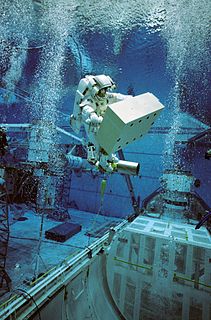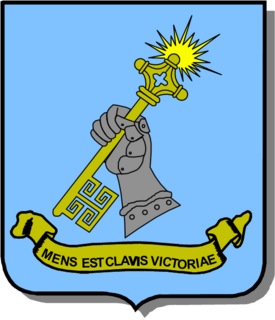
The School of Advanced Military Studies (SAMS) is one of four United States Army schools that make up the United States Army Command and General Staff College (CGSC) at Fort Leavenworth, Kansas. This "enormously rigorous" graduate school comprises two programs: the larger Advanced Military Studies Program (AMSP), and the Advanced Operational Art Studies Fellowship (AOASF), which more senior officers attend. The student body is small but diverse and comprises members of each of the US armed forces, various US government agencies, and allied military forces. Graduates are colloquially known as "Jedi Knights".

A non-commissioned officer (NCO) is a military officer who has not earned a commission. Non-commissioned officers usually obtain their position of authority by promotion through the enlisted ranks. In contrast, commissioned officers hold higher ranks than NCOs, have more legal responsibilities, are paid more, and often have more non-military training such as a university diploma. Commissioned officers usually earn their commissions without having risen through the enlisted ranks.
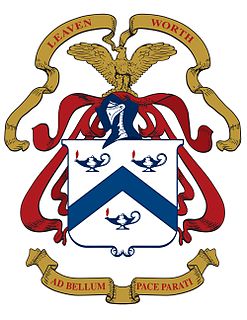
The United States Army Command and General Staff College at Fort Leavenworth, Kansas, is a graduate school for United States Army and sister service officers, interagency representatives, and international military officers. The college was established in 1881 by William Tecumseh Sherman as the School of Application for Infantry and Cavalry,, a training school for infantry and cavalry officers. In 1907 it changed its title to the School of the Line. The curriculum expanded throughout World War I, World War II, the Korean War, and the Vietnam War and continues to adapt to include lessons learned from current conflicts.
Staff colleges train military officers in the administrative, staff and policy aspects of their profession. It is usual for such training to occur at several levels in a career. For example, an officer may be sent to various staff courses: as a captain they may be sent to a single service command and staff school to prepare for company command and equivalent staff posts; as a major to a single or joint service college to prepare for battalion command and equivalent staff posts; and as a colonel or brigadier to a higher staff college to prepare for brigade and division command and equivalent postings.

The Marine Corps University is a group of accredited higher-education schools at Marine Corps Base Quantico, Virginia. It reports to the United States Marine Corps Training and Education Command. It was established on August 1, 1989 by General Alfred M. Gray, Jr., then Commandant of the Marine Corps.

The Air University (AU), headquartered at Maxwell Air Force Base, Alabama, is the U.S. Air Force's center for professional military education (PME). It is a key component of the Air Education and Training Command (AETC).

The Joint Forces Staff College (JFSC) located in Norfolk, Virginia, was established as the Armed Forces Staff College in 1946 and incorporated into the National Defense University in August 1981. It educates and acculturates joint and multinational warfighters to plan and lead at the operational level. Military operations increasingly require the Armed Services to work jointly and JFSC provides students the tools to operate in a joint environment. JFSC is composed of four schools, each with different student populations and purposes.

The U.S. Army Combined Arms Center (USACAC) is located at Fort Leavenworth and provides leadership and supervision for leader development and professional military and civilian education; institutional and collective training; functional training; training support; battle command; doctrine; lessons learned and specified areas the Commanding General, United States Army Training and Doctrine Command (TRADOC) designates in order to serve as a catalyst for change and to support developing relevant and ready expeditionary land formations with campaign qualities in support of the joint force commander.
The California Cadet Corps (CACC), originally called the California High School Cadets, is a paramilitary youth organization in California open to students in the college, high school, middle school and elementary school grades.

Ton van Loon is a commander from the Netherlands. He is a Lieutenant General employed by NATO who took control of the International Security Assistance Force (ISAF), Regional Command South (RC-S) on November 1, 2006 until May 1, 2007. From April 13, 2010 until September 25, 2013, he commanded I. German/Dutch Corps. He is married and has two children.
The New Zealand Command and Staff College (NZCSC) is the premier educational institute for the New Zealand Defence Force (NZDF) and is located at Trentham Military Camp, Upper Hutt. The New Zealand Command and Staff College provides professional military education to New Zealand Defence Force officers which prepares officers for command and staff appointments. The College was established at Whenuapai, near Auckland, in 1950, as a school for junior officers of the RNZAF. In 2004, the College moved to its present location in Trentham Military Camp, Upper Hutt near Wellington, New Zealand. Courses follow a modular approach that incorporate the following core subjects: Communication Skills, Operational Studies, Strategic Studies, International Relations, Command, Leadership and Management. Due to the College's close association with Massey University, it is able to offer to successful graduates of the Advanced Command and Staff Course (Joint) the delivery, by Massey University's Centre for Defence and Security Studies, of 150 credits of the 180 credits required for gaining a Masters in International Security.

The Penn State Army Reserve Officers' Training Corps is the ROTC department at The Pennsylvania State University. It is the largest branch of the ROTC program at the school, which also has Naval ROTC and Air Force ROTC. The Penn State ROTC Battalion is one of the 41 participating battalions in the 2nd Reserve Officers' Training Corps Brigade, also known as the Freedom Brigade. The brigade is headquartered at Fort Dix, NJ, and comprises ROTC programs in the North Eastern United States including CT, MA, ME, NH, NJ, NY, PA, RI, and VT.

Communications School is where selected United States Marine Corps commissioned and warrant officers are sent to learn the art and science of planning and employing communications and performing command and staff duties.

The term Enlisted Professional Military Education (EPME) is a general term used by all branches of the U.S. Armed Forces to describe the formal system of education each branch provides to its enlisted personnel. Each branch has its own system and sequence of courses, with the overall focus on leadership and management. Education generally increases in intensity and level of knowledge as individuals progress in rank and assume broader leadership roles. EPME is distinct from the technical training service members receive for their Military Occupational Specialty (MOS), Air Force Specialty Code (AFSC), or Navy Rating.
The Maneuver Captain's Career Course is a military training and education course primarily for U.S. Army infantry and armor officers. Organized under the Maneuver Center of Excellence (MCoE) at Fort Benning, Georgia, the course is 22 weeks long. While the course's students consist mostly of U.S. Army maneuver-branch captains and senior first lieutenants, several U.S. Marine Corps captains and officers from allied nations also attend. MCCC's mission is to prepare students for the leadership, training, and administrative requirements of a successful company commander and for the execution of the tactical planning responsibilities of Battalion S3s.
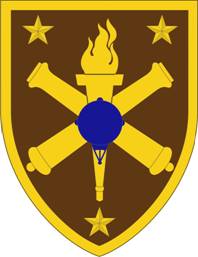
The United States Army's Warrant Officer Candidate School (WOCS), located at Fort Rucker, Alabama, provides training for Soldiers to become a warrant officer in the U.S. Army or U.S. Army National Guard, with the recent exception of U.S. Army Special Forces Warrant Officers. Since 2007, Special Forces Warrant Officers attend the Special Forces Warrant Officer Technical and Tactical Certification Course (SF-WOTTC) at Fort Bragg, North Carolina. As of January 2018, WOCS and SF-WOTTC are the only two training institutions which are authorized to appoint warrant officers in the U.S. Army. Warrant officer candidates are typically drawn from enlisted members and inter-service transfers. In this case, Inter-Service Transfer refers to enlisted members of the U.S. Air Force, U.S. Coast Guard, U.S. Navy, or U.S. Marine Corps transferring to the U.S. Army to attend WOCS, or civilian high school graduates who enlist for guaranteed attendance as aviation (flight) candidates at WOCS after they complete Basic Combat Training (BCT). Warrant officer candidates without prior enlisted service are informally referred to as high school to flight school or street to seat recruits by warrant officer candidates with prior enlisted service.
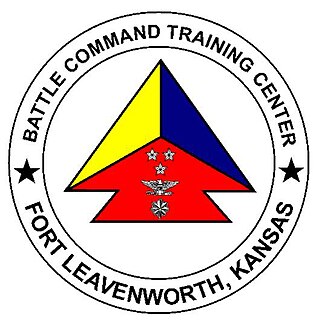
Battle Command Training Center - Leavenworth (BCTC-Lvn) provides battle command and staff training, training support, and publications to Army National Guard Soldiers and units, at its facility in Fort Leavenworth, Kansas, USA, or via mobile training teams, prior to mobilization to assist them prepare for full-spectrum operations in a joint, interagency, intergovernmental, and multinational environment.
Mission Command Training Program, based at Fort Leavenworth, Kansas, is the U.S. Army's only worldwide deployable Combat Training Center. MCTP provides full spectrum operations training support for senior commanders and their staffs so they can be successful in any mission in any operational environment. Its Senior Mentors counsel and offer their experience to Army senior commanders, subordinate commanders and staff. Additionally, MCTP's professional observer-trainers assist units with objective feedback and suggestions for improvement.

The Army Reserve Officers' Training Corps is the United States Army component of the Reserve Officers' Training Corps. It is the largest ROTC program, with 20,000 ROTC cadets in 273 ROTC programs at major universities throughout the United States. These schools are categorized as Military Colleges (MC), Military Junior Colleges (MJC) and Civilian Colleges (CC).
Brigadier General Ronald Paul Welch is an American military officer and the Director of the Joint Staff of the Connecticut National Guard. He began his military service in 1978 when he enlisted in the United States Army. He was commissioned, through Connecticut Military Academy in August 1984 through the Officer Candidate School.

